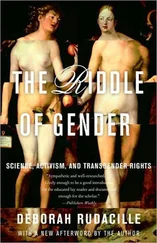The signature term in constructionist gender studies is “doing gender.” West and Zimmerman argued that:
gender is not a set of traits, not a variable, nor a role, but the product of social doings of some sort. . . . Doing gender means creating differences between girls and boys and women and men, differences that are not natural, essential, or biological. Once the differences have been constructed, they are used to reinforce the “essentialness” of gender. (1987: 129, 137)
Given membership in a sex category, doing gender is inevitable and unavoidable in a gendered society. One’s gender performance is evaluated by others and one is accountable for its appropriateness. The end result is not only personal and interpersonal gendering, but gendered workplaces, politics, medical and legal systems, religions, and cultural productions: “Doing gender furnishes the interactional scaffolding of social structure, along with built-in mechanisms of social control” (1987: 147).
To the extent that women conform to norms of femininity, they are complicit in their own oppression, just as men who benefit from the privileges of masculinity are complicit in reproducing that oppression (Martin 2001, 2003). The pressures of accountability for doing gender properly create family–work conflicts among successful women (Blair-Loy 2003; Hochschild 1997). These pressures constrain their career and family choices in ways that are often not of their own choosing. The discourse shaping the norms of work and family reflects invidious gendered assumptions and values. Julia Nentwich (2004), a Swiss psychologist, suggests alternative language to construct different realities. Within a work organization, she says, women can be different – exotic, not the norm, a problem to integrate. Or they can be similar, so that treating them differently is discrimination. In the family, the language of the traditional division of labor puts children and jobs in conflict, makes a paid job a privilege for mothers and spending time with the family a privilege for fathers. In contrast, the language of equal partnership assumes that her paid work is important to the woman, that fathers take care of their children, and that both participate in work and family. On full-time versus part-time work, the dominant language framework is that full-time has to be the norm because the demands of the job come first, performance is measured by time spent at the job, and work and private life are two separate spheres. In an alternative language framework, performance is measured by fulfilling objectives, jobs can be partitioned, and work, family, and other life concerns are overlapping spheres (Epstein et al. 1999).
If “doing gender” has been the touchstone of gender construction in the social sciences, Judith Butler’s concept of performativity , from Gender Trouble (1990), has been the prevailing concept in the humanities. Conceptually based in philosophy and psychoanalytic theory, Butler’s concept of performativity encompasses the unconscious process of making gendered selves that reiterate social norms of femininity and masculinity and inscribe femaleness and maleness on the body and heterosexuality on the psyche. Performance and identity are one and the same; one does not precede or exist without the other. And there lies the possibility for “gender trouble.” Gendering has to be done over and over, almost ritualistically, to reproduce the gendered social norms. But different ways of gendering produce differently gendered people. So, with conscious deliberation, one might create oneself differently gendered, and indeed, transgender people do just that. By 1993, Butler was rethinking aspects of gender performativity. In Bodies That Matter (1993), she took up the materiality or bodiedness of gender performativity and analyzed the ways that it encompassed sex and sexuality as well.
Butler ended Gender Trouble by arguing for the subversive political possibilities inherent in gender performativity. She said, “The loss of gender norms would have the effect of proliferating gender configurations, destabilizing substantive identity, and depriving the naturalizing narratives of compulsory heterosexuality of their central protagonists: “man” and “woman”’ (1990: 146).
Constructing gendered structures
Structuration is the congealing of the situationally based rules of interactive processes and practices and their enforced application across time and space (Giddens 1984). Concepts of gendered organizations, gender regimes, and gender as an institution convey stability and solidity, in contrast to the fluidity and mutability of doing gender and gender performativity. Gendered structures are not just the accumulation of gender processes; they constitute and organize a major part of the social order. With structuring, gendered practices (process) are imposed on by institutionalized patterns of social interaction embedded in legal and bureaucratic rules and regulations. Most significantly, these institutionalized patterns are imbued with domination and power.
A prime arena for research on gender structuration is the organization of workplaces (Acker 1990; Britton 2000; Ferguson 1984). A workplace is more or less structurally gendered on several levels. One is the extent of the division into women’s and men’s jobs; another is the steepness or flatness of the hierarchy of authority and prestige and the gender clustering at each level; still another is the range of wage and benefits scales and where women and men workers fall on it. The extent of gendering depends on the decisions, policies, and history of the particular workplace, which reflect and reproduce its structure through the interactions of workers as colleagues, bosses, and subordinates.
When workers are recruited to a heavily gendered workplace, a belief in the importance of gendered characteristics influences the search for candidates who are “masculine” or “feminine.” In westernized cultures, “masculine” traits would be rationality, objectivity, and aggressiveness; “feminine” traits would be emotional sensitivity, psychological perceptivity, and ability to mediate and compromise. In a non-gendered workplace, the search would be for workers who exhibited “neutral” characteristics, such as intelligence, honesty, experience, and mental agility. The gender designations of attributes as masculine, feminine, or neutral are culturally contingent, and the skills needed for a job are frequently re-gendered as the gender composition of the workforce changes (Jacobs 1989; Reskin and Roos 1990). The same jobs can be stereotyped as masculine “dangerous work” in one country and feminine work needing “nimble fingers” in another (Poster 2001).
The end result of the attribution of desired characteristics is the valuation of men workers over women workers, men’s jobs over women’s jobs, and “masculine” over “feminine” work capabilities. However the workplace is gendered, the economic outcome seems to be stubbornly uniform in advantaging men. Salaries are highest in jobs where men are the predominant workers, whether the worker is a woman or a man, and lowest in jobs where women are the predominant workers, again whether the worker is a man or a woman. Looked at from the perspective of the worker, men have the advantage no matter what the gender composition of the job or workplace since they earn more than women in jobs where men are the majority, in jobs where women are the majority, and in gender-balanced jobs.
The pervasive cultural beliefs about women and men workers that perpetuate gender inequality support the devaluation of women’s competence by men. Women themselves help to sustain the devaluation because they frequently compare themselves with other women, not men, at the same level. The unequal salary scales and opportunities for career advancement thus seem fair because there are no challenges to the beliefs that sustain them. In sum, the process producing gender inequality in the workplace is both interactive and structural. As Cecilia Ridgeway (1997) says, “The result is a system of interdependent effects that are everywhere and nowhere because they develop through multiple workplace interactions, often in taken-for-granted ways. Their aggregate result is structural: the preservation of wage inequality and the sex segregation of jobs” (1997: 230).
Читать дальше












